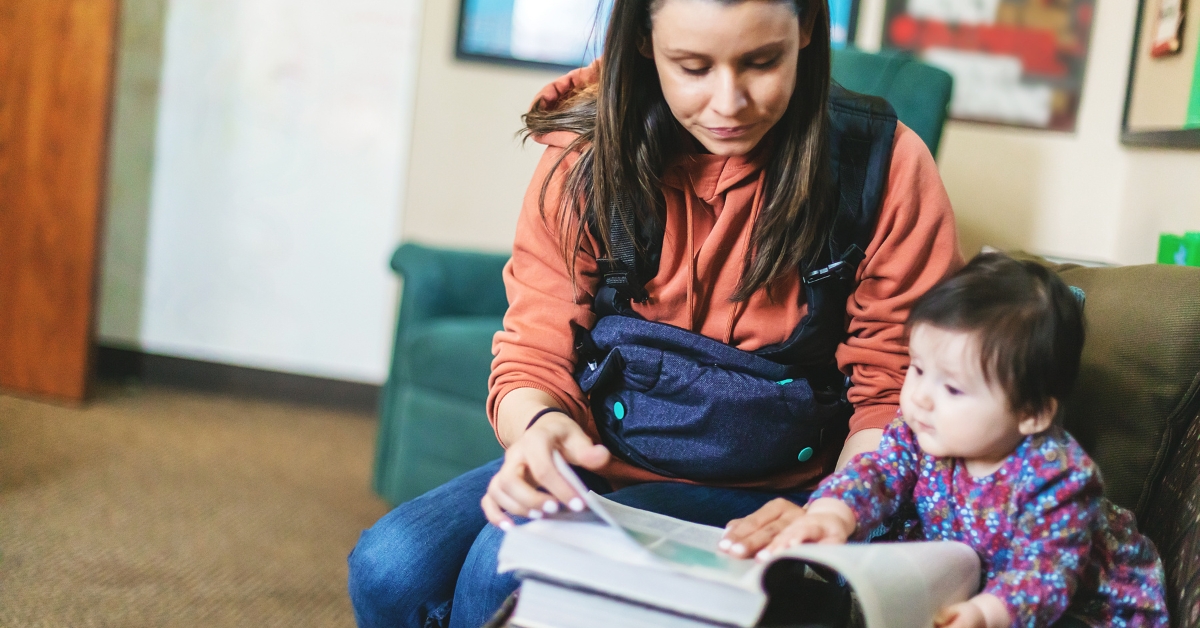Kentuckians need better access to child care and basic needs like food and housing to ensure higher postsecondary degree attainment, a statewide report released Monday says.
The Kentucky Council on Postsecondary Education, with funding support from the Lumina Foundation, released the 2023 Strategies and Recommendations to Address Students’ Basic Needs.

The report is the result of a year of data collection, conducted by The Kentucky Student Success Collaborative (KYSSC), which is part of CPE.
It hows that a large number of Kentuckians have basic needs insecurities — and many access services reactively rather than proactively.
Basic needs insecurity, the report asserts, “unequivocally jeopardizes student success.” It also increases the likelihood of failing a course by 15 times and withdrawal by 25%. Aaron Thompson
Furthermore, the report found, a person whose education is interrupted by financial difficulties is less than 20% likely to finish a degree.
“About one in three Kentucky students are classified as low-income, and we’re seeing a growing number of these students struggling with non-academic barriers to success, like hunger or even homelessness,” CPE President Aaron Thompson said in a statement. “This groundbreaking analysis is a great first step in not only remedying these issues at the postsecondary level, but also as a state.”
The data
Currently 54% of Kentucky adults have a postsecondary degree. The state wants to see that number at 60% by 2030. The way to accomplish that, the report says, is by making sure people who need public assistance and other benefits can and do access them.
From 2010 to 2019, the CPE report shows, more than 54,000 Kentucky adults earned a postsecondary credential. They then made more money.
In the 2020-2021 academic year, a quarter of students in the Kentucky Community and Technical College System (KCTCS) received Pell grants and public assistance. (The federal government funds Pell grants, which are distributed based on financial need). The number of students accessing Pell only was 26% in KCTCS and 24% at public universities.
About 30% of students at public universities and about 51% of KCTCS students were low income in 2020-21.
Low income students tend to be white and female, the report shows. Students of color are more likely to receive Pell grants – 47% compared to 33% white. Additionally, Eastern Kentuckians are disproportionately likely to have basic needs insecurity.
Policy recommendations
Policy recommendations outlined in the report focus on getting people the public assistance they need in time.
Those recommendations include: Proactively screen students for basic needs and wellness security so they access services before they’re in crisis. Increase eligibility and flexibility within public benefits. Most of Kentucky’s colleges and universities don’t have a person whose job is to coordinate basic needs support for students. Add more such positions with people who can help with applications and show students what is available to them. Provide professional development training for higher education staff and faculty so they can answer questions about public assistance. Address child care availability and affordability so more parents can access higher education.
This article is republished under a Creative Commons license from Kentucky Lantern, which is part of States Newsroom, a network of news bureaus supported by grants and a coalition of donors as a 501c(3) public charity. Kentucky Lantern maintains editorial independence. Contact Editor Jamie Lucke for questions: info@kentuckylantern.com. Follow Kentucky Lantern on Facebook and Twitter.
Sarah Ladd is a Louisville-based journalist and Kentuckian. She has covered everything from crime to higher education. In 2020, she started reporting on the COVID-19 pandemic and has covered health ever since.






